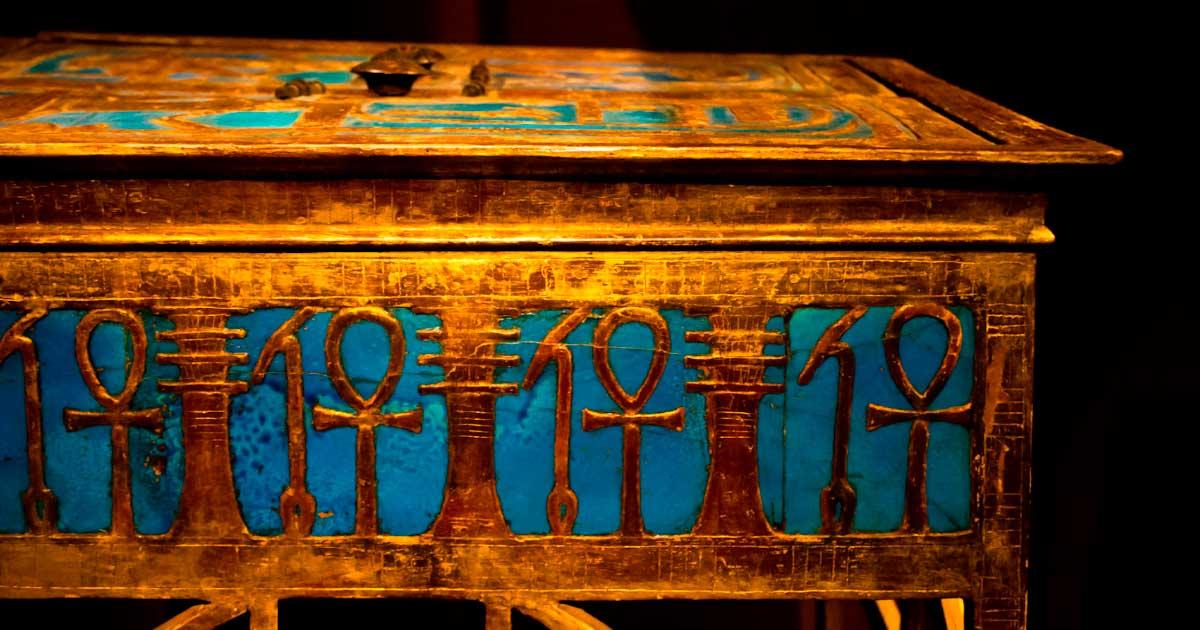
Thanks to Howard Carter’s discovery of King Tutankhamun’s tomb in 1922, there is no Pharaoh more well-known and well-loved than King Tut, the boy king, who died in 1323 BC at the age of 20. November 4, 2022, marks the 100th anniversary of the discovery of Tutankhamun’s tomb, an earth-shattering moment in archaeology! In celebration of this centennial, we are sharing 25 of the astonishing treasures found within his tomb.
Most spectacular of all the discoveries was, of course, the golden sarcophagus of Tutankhamen and the inlaid coffins, including one made of solid gold. Inside this nesting-doll-like assembly, rested the mummified body of the king himself. His death mask, also made of gold, has become the symbol of ancient Egyptian finery, and is considered one of the greatest works of art of the ancient world.
But among those well-known treasures were more than 5,000 precious artifacts in pristine condition. There were six chariots and all manner of weapons, shields, and daggers. There was also a wide array of furniture, much of it covered in gold and precious stones: two royal thrones, couches, chairs, ritual beds, and headrests. There were chests containing priceless pieces of jewelry and beautiful clothing made of fine linen. There were jars containing rare perfumes, precious oils, and ointments. There were elaborate shrines to the gods, including one which hosted the Canopic jars that stored King Tut’s preserved internal organs. There were musical instruments and writing implements, lamps, ostrich fans, and board games. There was food and as many as 30 bottles of wine. There were also 139 ebony, ivory, silver, and gold walking sticks. In short, every conceivable thing a young king may need in the next life could be found surrounding his body and sealed shut for eternity.
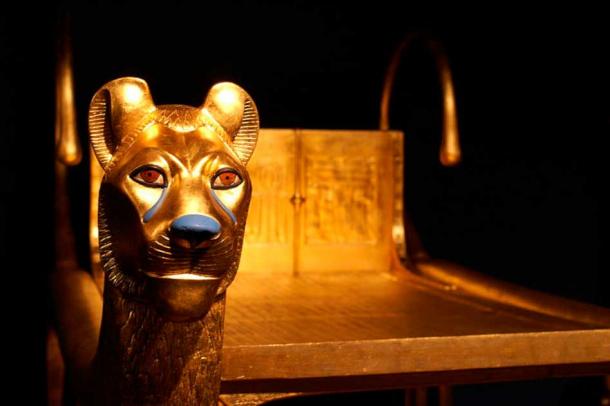
Detail of the ritual bed from Tutankhamen's tomb, replica (Mikhail / CC by SA 3.0)
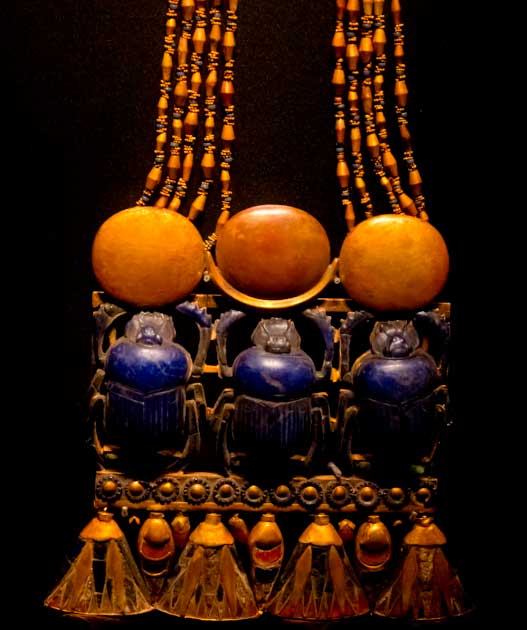
Pectoral with Three Scarabs, Tomb of Tutankhamun (Dmitry Denisenkov / Flickr)
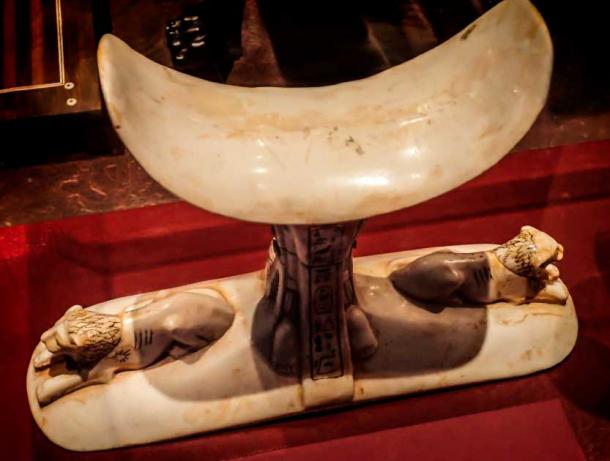
An ivory headrest with two recumbent lions. Photographed at the Discovery of King Tut exhibit at the Oregon Museum of Science and Industry in Portland, Oregon. (Mary Harrsch / Flickr) The headrest was the ancient Egyptian equivalent of a pillow, and was designed to keep the head elevated during sleep.
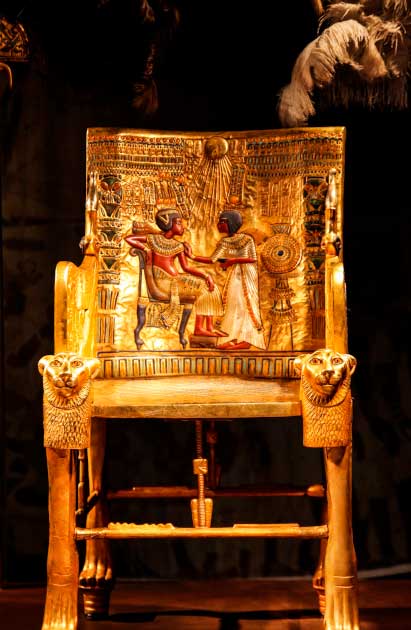
Golden throne found in Tutankhamun’s tomb. A scene from the daily life of the pharaoh is depicted on the front of the throne: the young Tutankhamun sits in a relaxed pose, while his wife Ankhesenamun rubs her husband's shoulder with fragrance oils. (Public Domain)
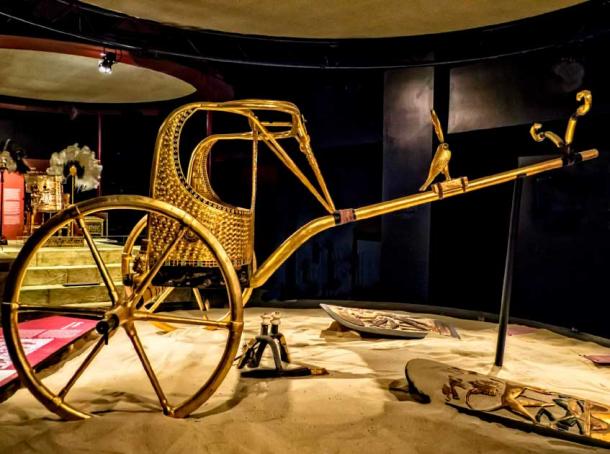
One of six chariots found in Tutankhamun’s tomb. These meticulously created reproductions were photographed at The Discovery of King Tut" exhibition in New York City. (Mary Harrsch / Flickr)
- Everyone Knows the Mask of King Tut, but Have You Seen Any of the 5,000 Other Treasures from His Tomb?
- Instruments of Mass Destruction: Do Tutankhamun’s Trumpets Really Summon War?

The Anubis Shrine was found guarding the entrance of Tutankhamun’s tomb. An Anubis statue sits atop a trapezoidal altar made of gilded wood. Egyptian Museum, Cairo. (kairoinfo4u / Flickr)
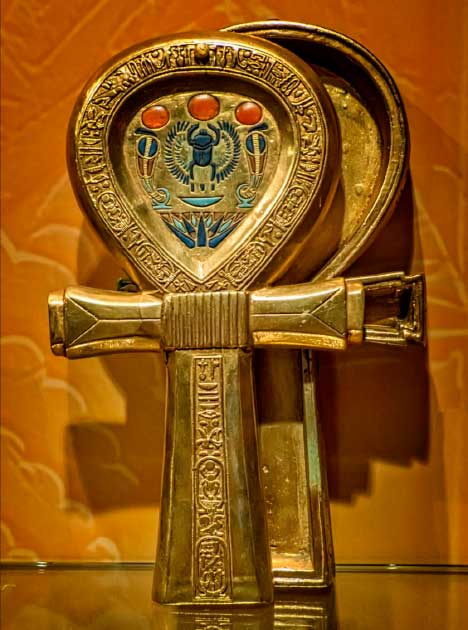
Makeup box in the shape of an ankh from King Tutankhamun's tomb. Photographed at The Discovery of King Tut exhibition in New York City. (Mary Harrsch / Flickr)
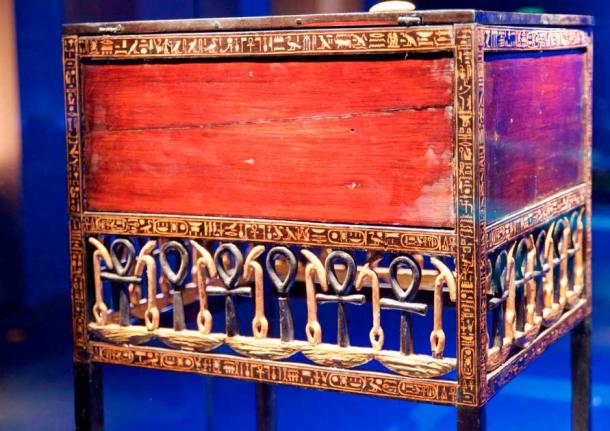
A legged hieroglyphic chest from Tutankhamun’s tomb (Bill Abbott / Flickr)
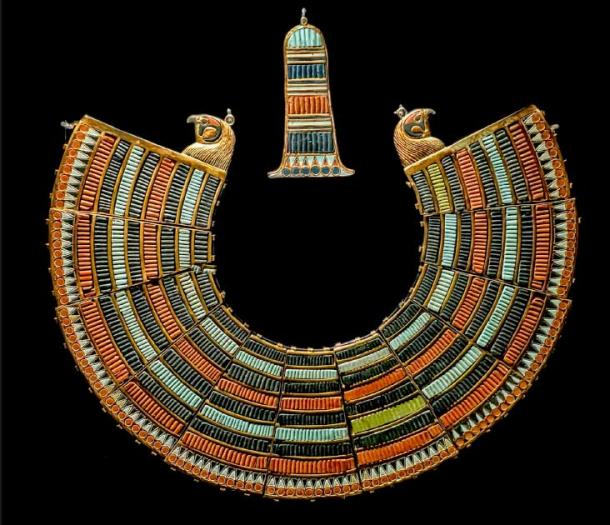
Collar of semi-precious stones with falcon-headed terminals found on the mummy of King Tutankhamun. Photographed at The Discovery of King Tut" exhibition in New York City. (Mary Harrsch / Flickr)
- The Boy King Behind the Mask: Tutankhamun’s Life and Legacy
- Unearthing the Ancients: Discovery of the Tomb of Tutankhamun
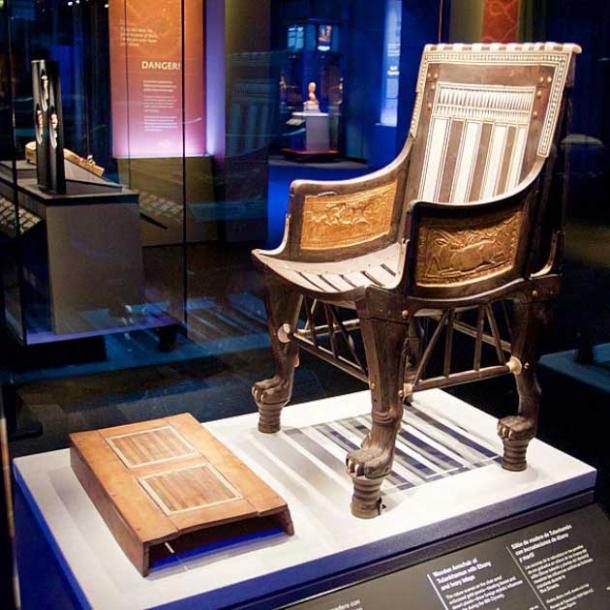
Child-sized chair and footstool made of ebony inlaid with ivory found in Tutankhamun’s tomb, which he may have used as a child. Photographed at the Discovery of King Tut exhibit at the Oregon Museum of Science and Industry in Portland, Oregon. (Bill Abbott / CC by SA 2.0)

Cosmetic oil vessel with the representations of Nile gods symbolically uniting Upper and Lower Egypt, alabaster, gold, ivory, from the tomb treasure of Tutankhamun. Egyptian Museum, Cairo (Djehouty / CC by SA 4.0)

Ivory rattle and ornate reed pen case found in King Tut's tomb. Photographed at the Discovery of King Tut exhibit at the Oregon Museum of Science and Industry in Portland, Oregon. (Mary Harrsch / Flickr)
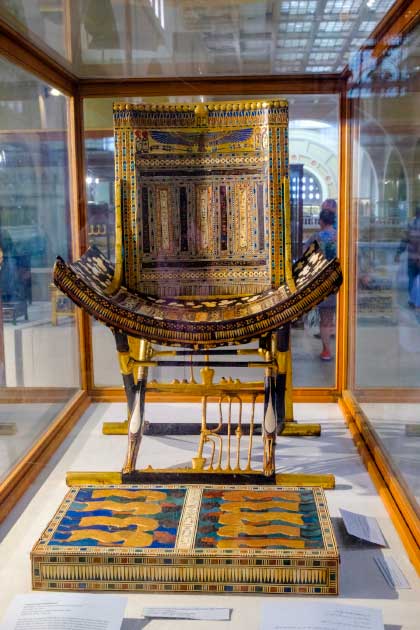
An ornate golden throne and footrest from Tutankhamun’s tomb (Mirko / Adobe Stock)
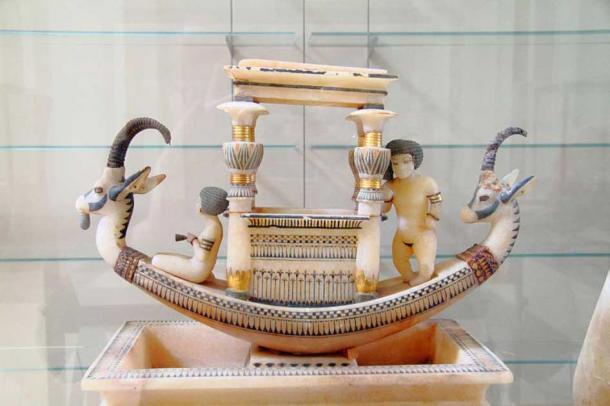
Alabaster and ivory boat statue from the tomb treasure of king Tutankhamun. Egyptian Museum, Cairo. (Djehouty / CC by SA 4.0)
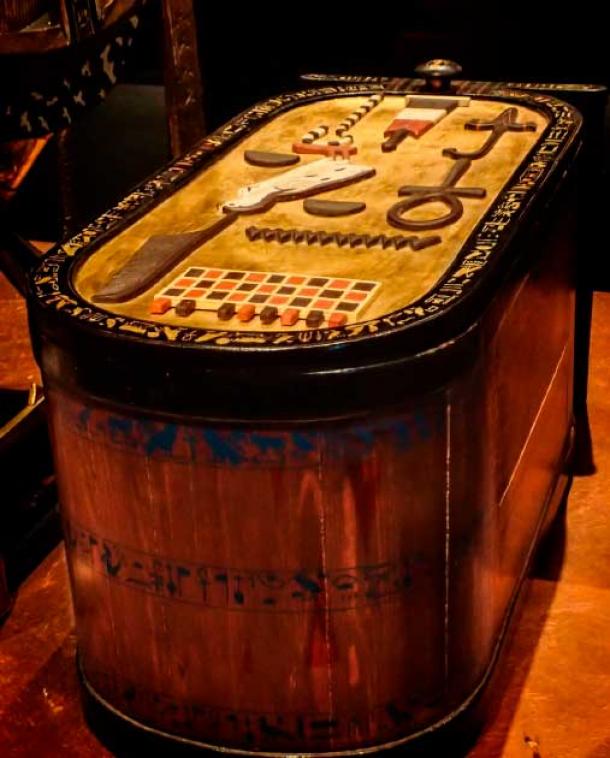
Storage chest in the form of a cartouche found in King Tut's tomb. Photographed at the Discovery of King Tut exhibit at the Oregon Museum of Science and Industry in Portland, Oregon. (Mary Harrsch / Flickr)
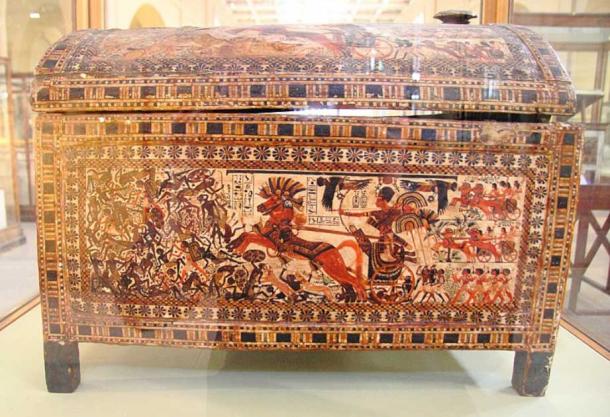
Ornate storage chest from the tomb treasure of King Tutankhamun, stuccoed and painted wood. Egyptian Museum, Cairo. (Djehouty / CC by SA 4.0)
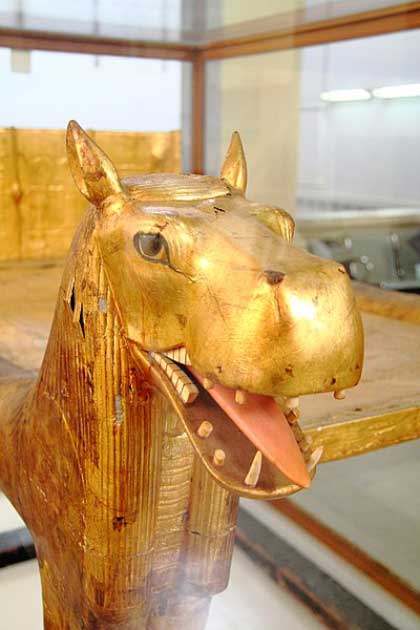
Detail of a golden animal head from a ritual bed found in the tomb treasure of King Tutankhamun. Egyptian Museum, Cairo. (Djehouty / CC by SA 4.0)
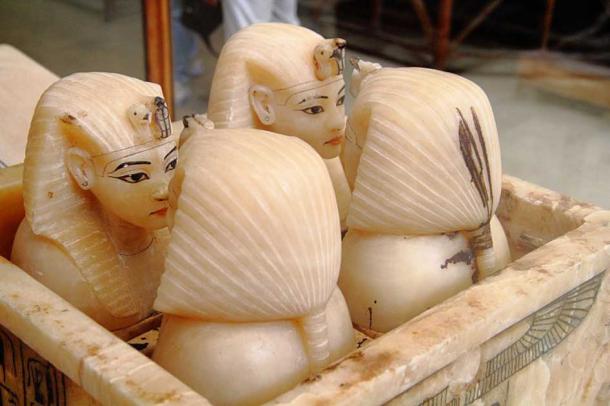
Four canopic jars containing Tutankhamun’s internal organs - lungs, stomach, intestines and liver. Four goddesses protected the shrine - Neith to the north, Selkis to the south, Isis to the west and Nephthys to the east. (Djehouty / CC by SA 4.0)
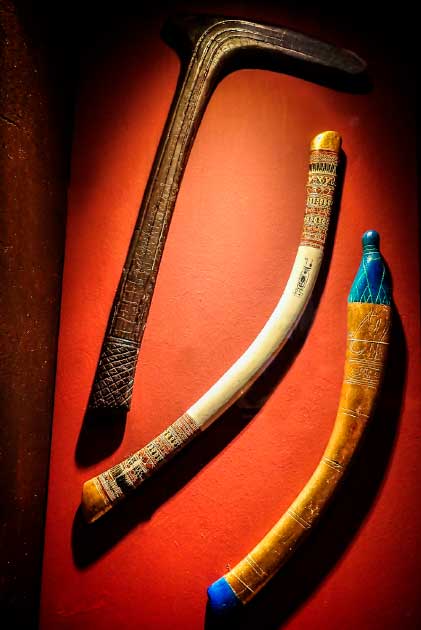
Throwing sticks found with King Tut's hunting equipment although the center one made of ivory and the lower one with gold and faience terminals would have been only used for ceremonial purposes. Photographed at the Discovery of King Tut exhibit at the Oregon Museum of Science and Industry in Portland, Oregon. (Mary Harrsch / Flickr)
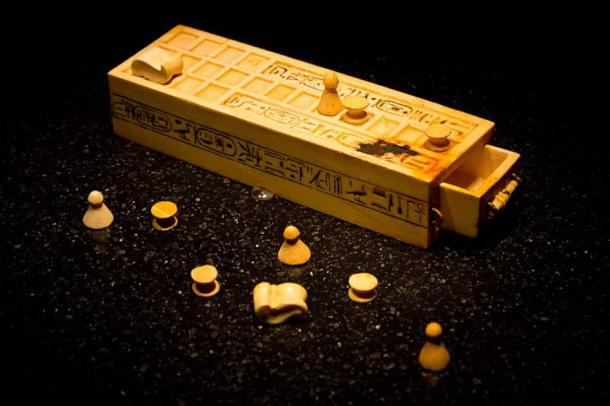
A game box and pieces for playing the game of the Royal Game of Ur found within the tomb of Tutankhamun. This photo was taken at the King Tut exhibition at the Pacific Science Center in Seattle, Washington State, USA. (ddenisen / CC by SA 2.0)
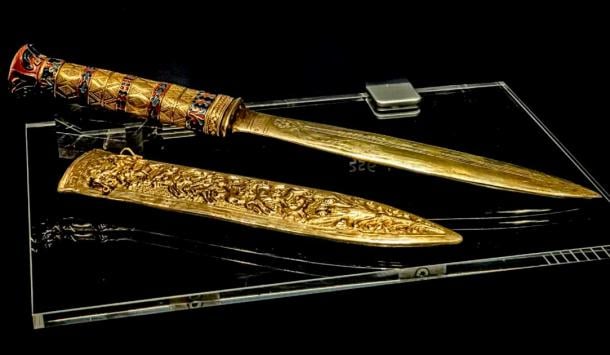
Gold dagger found in a girdle around the hips of King Tutankhamun's. Photographed at The Discovery of King Tut" exhibition in New York City. (Mary Harrsch / Flickr)
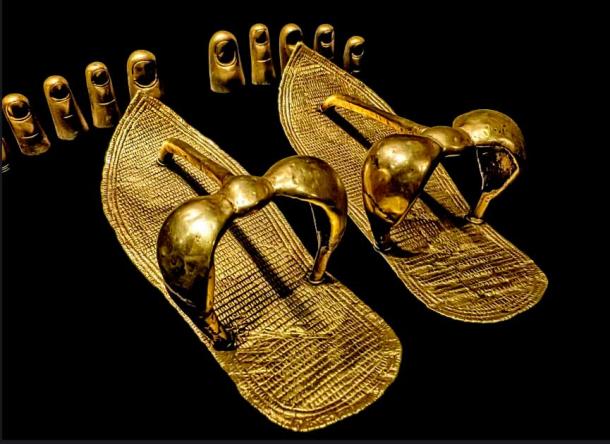
King Tutankhamun's gold sandals and toe covers. Photographed at The Discovery of King Tut" exhibition in New York City. (Mary Harrsch / Flickr)
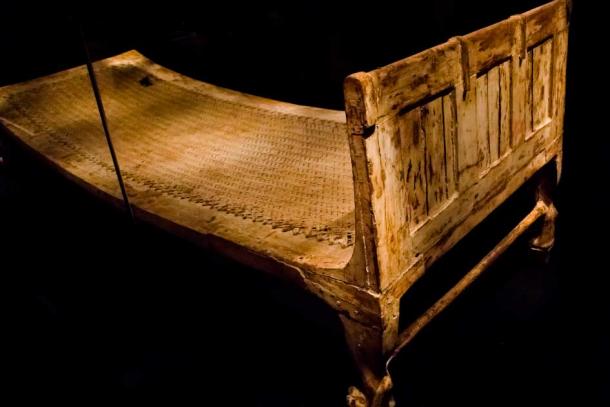
Tutankhamun’s bed from his tomb treasures (Dmitry Denisenkov / Flickr)
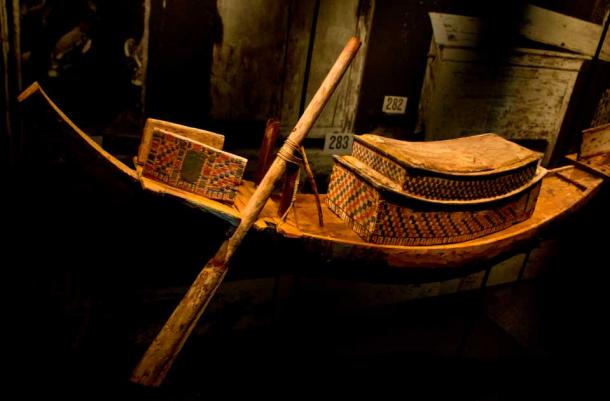
One of 35 model boats found in Tutankhamun’s tomb (Dmitry Denisenkov / Flickr)
Top image: Elaborate Box with Cartouche of Amenhotep III found in Tutankhamun’s tomb. (Dmitry Denisenkov / Flickr)
By Joanna Gillan



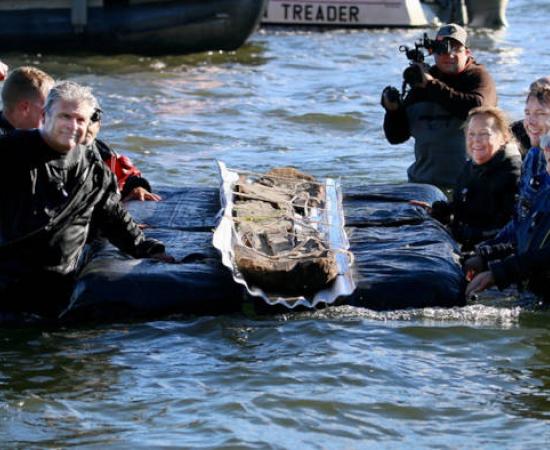
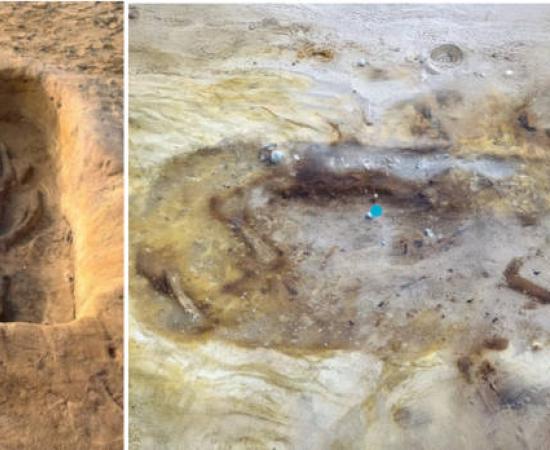
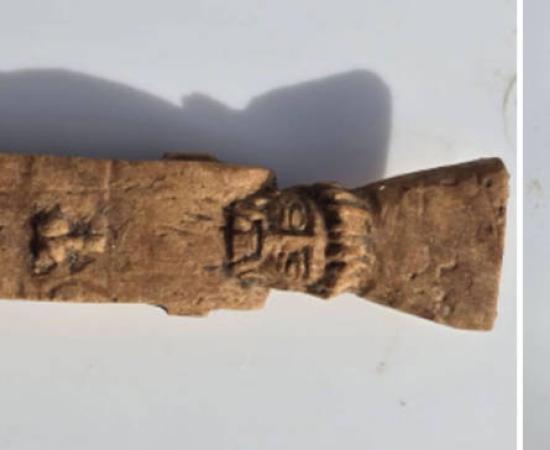
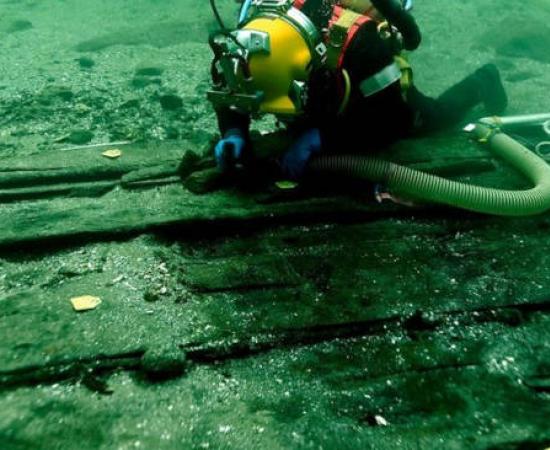
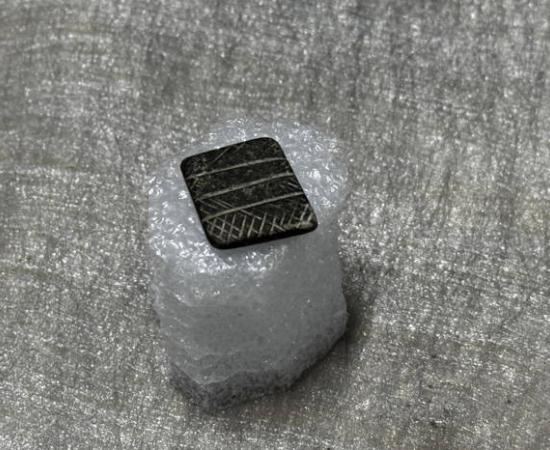
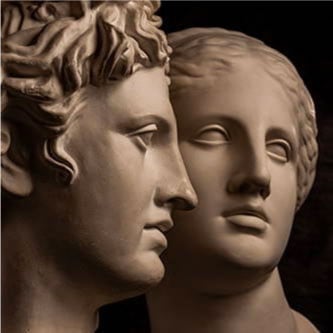
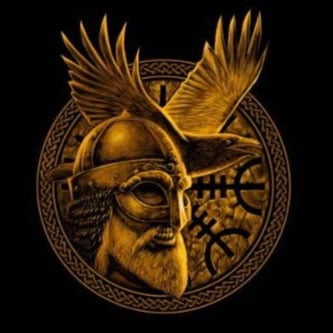
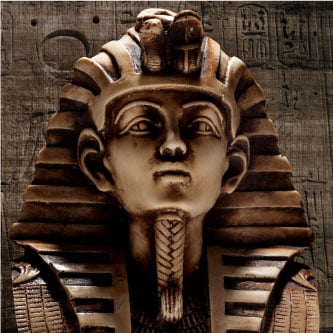





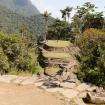
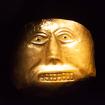
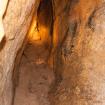
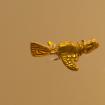

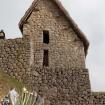
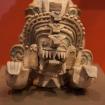
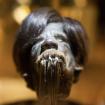

Curse
Permalink
Interesting how the only one of the people who excavated the site to NOT die an unnatural death was carter.. n he just happened to be the only one who had a supposedly Atlantean ring that purportedly protected from the spiritual technology that had been imbedded in the tomb? Slightly off topic but if the valley of the kings was where they were burying all these pharoahs n elites . Exactly what is the evidence that giza was a tomb complex?
Tutankhamun's curse
Permalink
It's a shock to me that Carter, while discovering Tut's tomb, didn't die!
They say the tomb is cursed... Anyone who touches it or opens it dies or something bad happens to him... But Carter survived... Maybe Tut was watching from above when the tomb was discovered and maybe he wanted to be hell famous among the new generations.
IRONICLYRICIST
Permalink
IRONICLYRICIST
The evidence that Giza was a tomb complex is that there are hundreds of tombs there, some of them pyramids, many mastabas of elites, and some shaft graves. Khufu’s mother Hetepheres was interred, (probably reinterred) in a shaft grave with many posessions.
There are many tomb sites in Egypt, Giza and the Valley are just two of them. The Giza site dates more than 1000 years before the Valley of the Kings, which was New Kingdom.